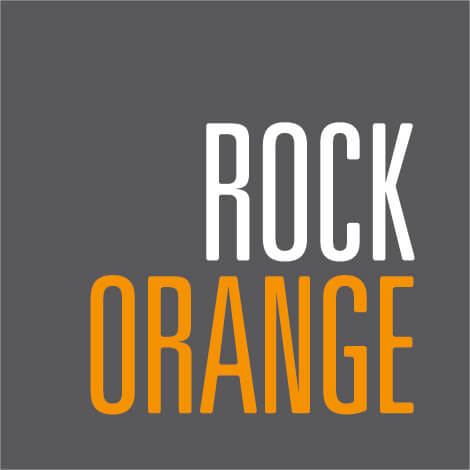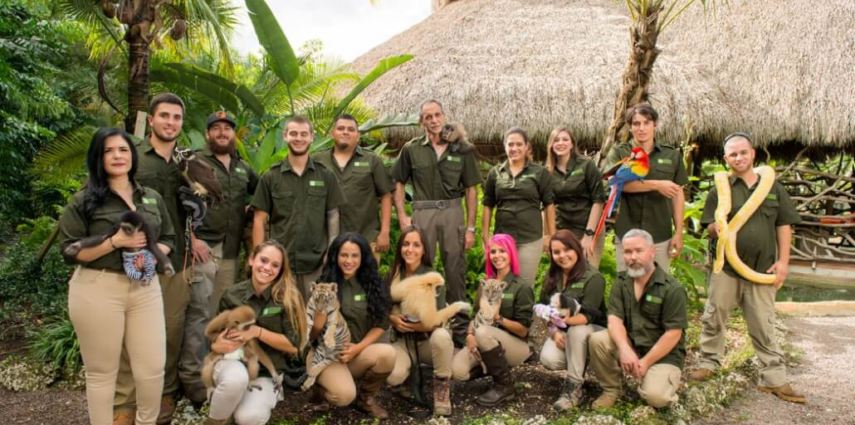All posts by rockorange
You Can’t Force Diversity. Instead, Look For Places Where It Grows Naturally.
By Miguel Piedra, Principal & Managing Partner, RockOrange

Last month, Palo Alto-based computer hardware developer HP made news when its CMO issued an ultimatum to its PR and advertising partners, exhorting them to submit plans for those agencies to become more diverse in the next 30 days.
In the letter, Antonio Lucio put HP’s roster of agencies on notice. That includes some of the most prominent names in our industry: FleishmanHillard and Porter Novelli for PR; and BBDO, Fred & Farid, and Gyro for advertising.
Lucio’s goal is laudable. The communications and creative world is overwhelmingly white and male. Hispanics, African-Americans and women are chronically underrepresented—doubly so in leadership roles. This at least partly explains many of the embarrassingly tone deaf and cringe-worthy campaigns that have tried unsuccessfully to court these demographics. To understand a culture, one must have at least some mooring in that culture. To execute a successful campaign, you need at least one person in the room who understands the target demographic. Too often, there are none.
But for diversity to take hold and deliver real, positive outcomes, the organization must truly believe in it. Lucio’s heart is in the right place. But from an internal, agency perspective, I can see the natural progression of what will come from this strategy. Ultimatum delivered, the hiring partners will scramble to keep the business. No one is in business to lose money. So whether or not they believe in the core value of diversity becomes beside the point. They will have their talent acquisition and human resources teams do what is necessary to ensure the business is kept. But in the end, if someone is hired as a show pony, or as a token nod to diversity, that is how he or she will be treated. How does that achieve the desired end of viewing projects through different lenses?
Understand, diversity is two-pronged: you must first hire a collection of individuals from different backgrounds, and then empower them to have an effect on your business. It is hard to imagine an agency compelled to hire or promote to meet a client ultimatum will deign to do the latter. The only thing that gets more diversity is the Meet the Team page on their website.
Instead, brands like HP would do well to hire agencies that already value diversity and show the veracity of that belief through their staffing.
There are many agencies around the country that look and act like ours. At RockOrange we are not only minority owned, but more than two thirds of our agency is comprised of women and at any given moment we are 75-80 percent black or Hispanic. Our RockStars range in age from 22 to 50s. We draw from a rich array of life experiences, employing talent from all walks of life and socioeconomic backgrounds.
It wasn’t difficult to do this, and it wasn’t an accident. Miami is an overwhelmingly diverse city, a tapestry of black, white, brown, and all shades between, serving as a model for the next American generation. If you’re a believer in demographic data and population trends, Miami—and by extension our agency—looks a lot like how the country will look in 2050.
But our adherence to diversity as a value is rooted in more than simple geography. Many of our team members have worked in homogenous environments where everyone is from the same place and brings similar experiences. The effect is a deafening echo chamber where disagreement is viewed as dissention. Lack of diversity fosters groupthink, narrowing the collective view. The narrower the view, the broader the blind spot. It’s a dangerous way to do business. It’s how a campaign winds up comparing Naomi Campbell to a chocolate bar. It’s how every Latino menu item at national chains ends up being “spicy” or “fiery”.
For executives like Lucio who understand the underlying business proposition behind diversity, there are alternatives to shoehorning it into the vast organizations they hire—admirable a goal though it may be. Our agency has diversity baked into its very DNA. And while we work with mostly national or international brands, everyone’s unique point of view is not just respected—it’s required. We make diversity work for us, and for our clients.
Instead, try working with agencies that are already built that way. As someone who has worked on both the client side as a chief communicator and the agency side as an owner, I can attest that the work product is guaranteed to be more authentic and appealing when it comes from a room of different people with diverging opinions.
An agency that needs to be told to make itself more diverse has a long hill to climb before it becomes truly diverse. For those who see the value, there’s no such thing as scrambling to keep the business with token hires.
How Can Brands Capture the Hispanic Consumer?
For the first time ever, this September ESPN will become the first mainstream sports media network to broadcast Nación ESPN, a show geared toward Latino sports fans where English will be the main language but guests will have the option to speak in Spanish.
This announcement came hot on the heels of iPhone’s debut of its bilingual keyboards, enabling Latinos to converse in Spanglish via text as they do in real life without the hassle of having to switch between keyboards for spelling and grammar specific to each language.
Both happenings are testament to the increasing power of the growing Hispanic population in the U.S. Currently representing some 18 percent of the population with 60 percent (and growing) of the demographic falling into the millennial category or younger. And with a spending power of $1.5 trillion it’s no wonder that brands are looking to adapt their strategies to target this group.
But there are many complexities in reaching this powerful demographic. Differences in age, culture, income and language preferences are just some of the barriers to be overcome. That’s why this week we’re asking our RockStars – How can brands capture the Hispanic Consumer?
How Can You Engage Using Video?
The power of video content is undeniable. Including video on a landing page can increase conversion by 80 percent and video in an email leads to 200-300 percent increase in click-through rate. That’s why the medium can no longer be ignored as part of your marketing mix.
But video consumption habits are changing. Live social platforms like Facebook and Snapchat are taking viewing time away from more traditional online platforms like YouTube, and shrinking attention spans mean that short form or micro content (videos less than 5 seconds) are proving as, or more, effective than TV-style 30 second spots.
So while marketers know they need to spend more time on video, understanding what’s going to work best for their brand is hard. That’s why this week we’re asking our RockStars – How Can You Engage Using Video?
A Wild Tale of Helping a Foundation Brand Find Its Voice
Miami has a not-so-well-kept secret that, for those who visit, is a unique, memorable and totally Instagrammable experience.
The Zoological Wildlife Foundation (ZWF Miami) is home to nearly 200 exotic animals including lions, leopards, camels, otters, baboons, monkeys, anteaters and more. The mission of the foundation is to provide a safe haven and better quality of life for these animals that come from all parts of the world and even at time have been rescued from at-risk situations, such as canned hunting.
ZWF raises funds to continue to provide a better way of life for the animals by offering tours and one-of-a-kind personal animal encounters for members of the public with a focus on educating visitors on wildlife conservation.
The Job
RockOrange was hired as the Agency of Record by the foundation in 2015 to help the brand find its voice, increase brand awareness and drive visits to the property.
RockOrange set out to launch a content driven omni-marketing campaign showcasing ZWF’s exceptional, upscale experience as well as their commitment to their animals.
The Fresh Ideas
We started by honing the brand’s voice. Focusing on the animals and their experience in the zoo, the goal was to showcase the commitment and respect ZWF has for their animals. This also provided the opportunity to keep the tone light and imbued with the animals’ fun personalities.
All digital properties, including the website, social channels, and user-review sites, such as Trip Advisor, were updated with the new voice, and an SEO campaign was launched that helped raise the client’s Google page ranking from one to three.
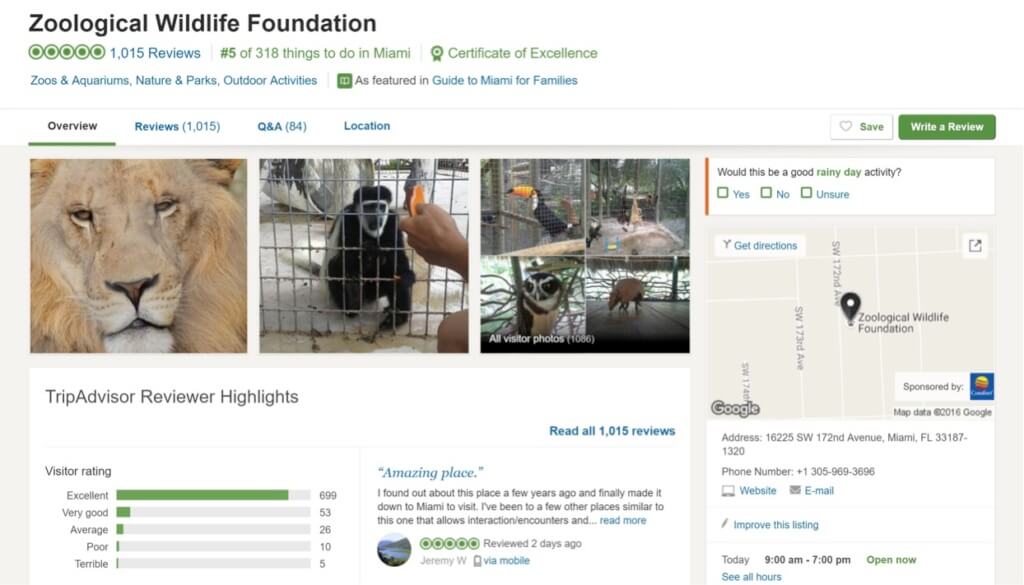
Snackable, shareable content in the form of photos, videos and blog posts was produced demonstrating the relationship between the animals and ZWF’s team and shared via a social media strategy with a focus on consistency.


Private tours and animal encounters were arranged with local and national influencers who were encouraged to amplify awareness of the foundation by sharing images and videos of their visits with their established social communities.
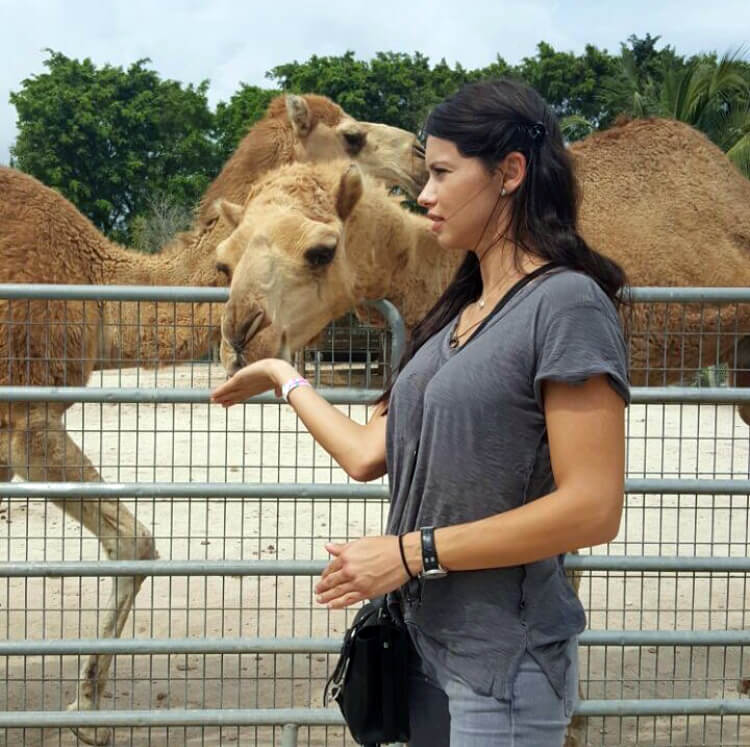
ZWF, its founders and brand ambassadors were weaved into the conversation by keeping a close eye on trends in wildlife conversation and a relationship was built with key media through media tours, FAMS and sharing of newsworthy content.
The Solid Results
ZWF’s online presence increased by 343 percent. Website traffic increased by 63 percent, the brand’s social media following shot up 67 percent and a 13.41 percent engagement with ZWF’s Facebook community was maintained.
The increased digital presence and media coverage resulted in their ranking on TripAdvisor as the #5 Best Thing to Do in Miami, #9 Best Zoo in the World, and #4 Best Zoo in the U.S. Brand sentiment increased from 92 percent positive to 98 percent positive and brand negativity decreased 67 percent.
ZWF was mentioned on Good Morning America, Today Show, Inside Edition, Associated Press, Reuters News Service, CBS Miami, USA Today, Yahoo!, The Miami Herald, NBC 6 in and thousands of other broadcast and internet publications.

Influencers including Kate Upton, Kourtney Kardashian, Jonathan Cheban, Adrienne and Chris Bosh, Adriana Lima, Lele Pons, and Dan Le Batard all visited the property and shared content on their social media channels.

Relationships were forged on behalf of ZWF with Greater Miami Convention & Visitors Bureau, Gilt Groupe, St. Jude Research Hospital, South Florida Concierge Association, Amigos for Kids, HBO, and New York University.

Additionally, RockOrange secured the filming of HBO’s hit series Ballers, which stars celebrity Dwayne “The Rock” Johnson.
Overall, the content driven approach proved successful in increasing revenue for the foundation by 217 percent in the first year of the campaign.
How Can Brands Turn A #Fail Into a Win?
Last week marked the kick off of the 2016 NFL season and with it, the much anticipated start of fantasy football. However, on Sunday the ESPN Fantasy Football app, which everyone and their mother uses to track their stats, went down and consumers took to Twitter to vent their rage… or post hilariously mocking memes.
For today’s constantly connected consumers who are checking their phones around 46 times a day, the internet, and more specifically, Twitter, has become a ‘social telephone’ to call in complaints about brands and customer service in real time. And those customers expect a response. Fast. However, while 78 percent of people who complain to a brand via Twitter expect a response within an hour a 2015 brandwatch study discovered that only 46.6 percent of brands engaged with any tagged @mentions (which were categorized as neutral, questions or complaints) with 64.6 percent responding to questions within five days and only 11.2 percent responding within one hour.
Nevertheless the opportunities for brands to turn their social media #fails into wins is possible. Which is why this week we’re turning to our RockStars to get their advice as we ask – How Can Brands Turn A #Fail Into A Win?
How Can You Build Your Personal Brand?
As the 2016 U.S. presidential race heads into the home stretch there are just a few points separating the candidates which is why, beyond the party politics, their personal brands have never been more important in helping sway opinion and those still undecided voters.
While Clinton and Trump have teams of people working around the clock to help craft their messages and perfect their image online and IRL, there are plenty of lessons that brands and individuals can take from the race to build support for their own personal branding campaigns.
That’s why this week we’re exploring those lessons and asking our RockStars – how can you build your personal brand?
RockOrange Makes Trash Trend with Anti-Litter Campaign
Keep Us Fit, Pick Up Your…
Trash.
That was the call-to-action for the City of Miami Beach’s “Keep Miami Beach Clean,” the city’s first-ever anti-litter campaign, that RockOrange conceptualized and launched earlier this year.
Targeting the younger, millennial generation and regional day-trippers, the campaign was aimed at getting people to make a connection between keeping the city fit by exercising common sense and tossing trash and recyclables in the right place.
The Fresh Ideas
Using real people who live in, work on and love Miami Beach, as the models for a series of visuals showing people how to trash their trash and recycle their recyclables while keeping fit, RockOrange created shareable content with made-you-look-twice taglines including “Keep Us Fit, Pick Up Your…” and “Keep Miami Beach Clean AF (and fit).”


The content was pushed out across multiple channels, online and offline, including: billboard style posters throughout Miami Beach, including buildings, bus shelters and on the back of buses; online via the City’s social media channels, and; in print and broadcast advertising spots.
Recognizing Miami’s diverse demographics, the content was produced in both English and Spanish language to make sure that the message was received loud and clear by everyone and that language wasn’t cited as a barrier to keeping the beach clean.
To amplify the campaign message further, RockOrange designed a character – Mr. MB Clean – that would personify and act as a visual spokesperson for the campaign. We took the character to a series of Miami Beach community events including Commissioner Michael Grieco’s Spring Break Cleanup, Winter Music Conference, Spring Break, Flotopia, Ciclovia and the Fire on the Fourth Festival and had him interact with the public for photo opportunities and to promote the campaign message.
The Solid Results
The campaign continues to be a huge success.
The ‘Clean AF’ semi-viral launch ads drove awareness, shares and heated discussions with over 200 thousand interactions in social communities. Overall sentiment was positive, with an article in Curbed Miami running a poll that gave the ads an 80 percent approval rating.

And Mr. Clean proved even more popular. Photos from the character’s appearances, combined with snaps of the ad spots have driven over 780 mentions online and 8.2 million impressions to date using the campaign hashtag, #KeepMBClean. Additionally, through the event activations over 10,000 people have been exposed to the campaign.


As Mr. MB Clean continues to attend events and the broadcast commercial rolls out on local and regional networks and during previews at South Beach’s Lincoln Road Mall movie theater, those numbers are only set to increase.
Does She Really Like It?
Ever wondered if your favorite celebrity really likes that product they posted a picture with or if they’re being paid to promote it? Well the FTC wants to clear up any confusion and is cracking down on brands and influencers that are not transparent about paid promotional activity. And hashtags like #spon or #ad might not be enough. That’s why this week we’re asking our RockStars how brands can still run successful influencer marketing campaigns while playing by the rules so the consumer isn’t left asking – Does She Really Like It?
Essentials: Apps
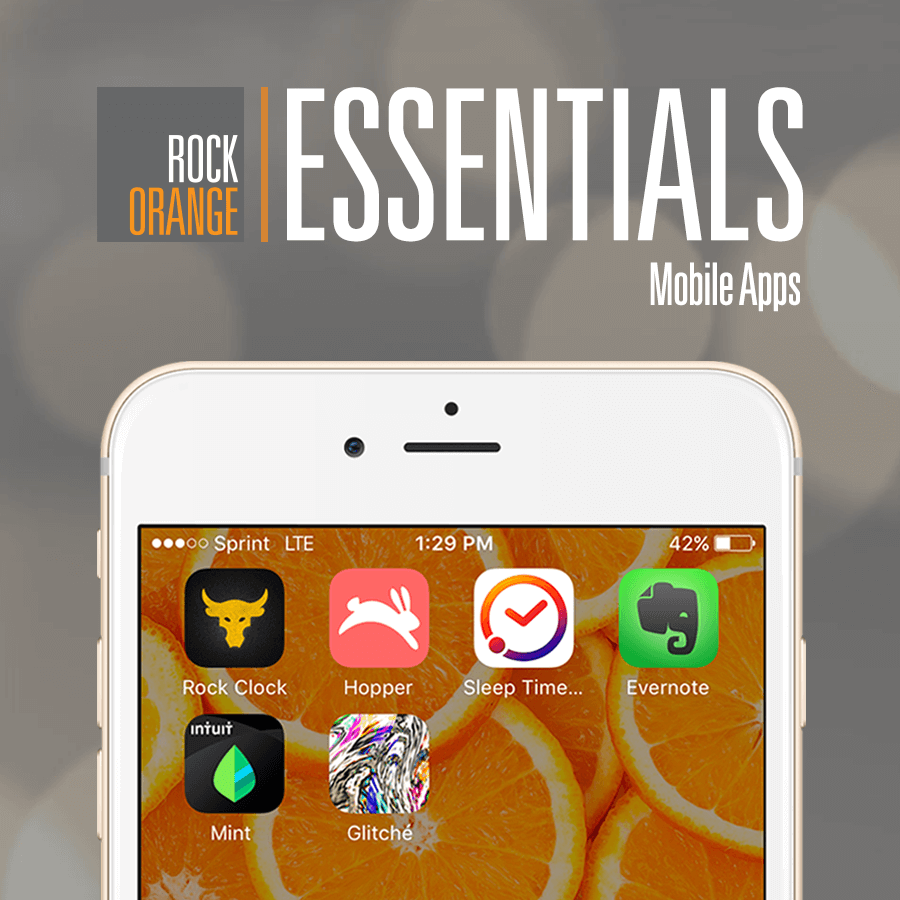
Thankfully we’ve evolved from the days of carrying around the brick cellphone in a briefcase, so much that we now use our phones for everything except making a phone call. We actually only spend an average of four hours on calls and messaging a month. Smartphones can take a picture, send or receive texts, access the Internet, send or receive an email and download apps. The App Store also opens up a treasure chest of apps that gives us a thousand options at any time of the day. Using our smartphones is now habitual; we pick them up an average of 46 times a day without even realizing it and unconsciously scroll away from reality.
Let’s all admit we’ve been interrupted from an Instagram-liking session by a “Storage Almost Full” notification. It’s partly because there are too many things going on in your smartphone from apps you don’t acutally use. Too soon, you’re one download away from not being able to have space to even take a picture.
Because our RockStars have gone through this, we all pitched in our favorite apps to make the best out of your iPhone’s storage.
- Rock Clock: Who’s a morning person really? Waking up to the same Beep alarm can get repetitive — to the point that we can get so used to it that it no longer works as a wake up call.
‘Rock Clock’ was created by Dwayne “The Rock” Johnson to motivate everyone to kick off the day with an enthusiastic note. As you set your goal and tap through the app, The Rock encourages you by saying, “You can do this” and, “You got this!” The best part of having this app—he sings to you, “Good Morning Sunshine” every day.
- Hopper: Probably the least exciting part of taking a trip is finding a decently priced airline ticket. Let’s be honest—cheap airlines are not the most reliable, we think we’re paying half the price and then get smuggled with extra fees for luggage and seats. Hopper was created to make our lives easier and affordable by helping us figure out what are the best dates and times for your next trip. The best part of having this app—it lets you “watch” that trip and sends notifications when prices are dropping.
- SleepTime: Before The Rock’s lullaby wakes us up, we have to make sure we had a nice and fulfilled sleep. Since we don’t use our phones enough throughout the day, why not use it under our pillows every night? Sure, we all sleep, but are we having a good sleep? SleepTime tracks our sleeping stages from awake, light sleep and deep sleep plus REM sleep (the stage where dreaming happens). The best part of having this app—it graphs your sleeps so you can keep track of your sleeping patterns and/if they change over time.
- Evernote: For those who no longer use the old-school method of using a notepad and pen to keep up with the to-do list, Evernote is your go-to app. It stores your information, from your grocery list to your driver’s license scanned copy to legal documents, in one place. Making and keeping notes and files organized without having loads of paper that can get lost or mistakenly shredded seems convenient for lots of people. The best part of having this app—it’s easy to customize and flexible when it comes to setting up your folders.
- Mint: Keeping up with your finances may not be the easiest or most thrilling part of your day, but Mint makes the process a lot easier. It’s like having your own financial advisor but in an app. It helps with budgeting, tracking expenses and creating/monitoring financial goals for oneself. The best part of having this app—whenever there’s a change in your account, a rate changes or a late fee happens, the app sends you a notification.
- Glitché: To end on an artistic note, Glitché is the app for all the creative minds. What this app does is give a special twist to images in a very strange, yet amazing way. The unique effects that can be added to your masterpiece include pulses, random shakes, pixelization, transmission errors, etc. The best part of having this app—there’s a range of 26 filter options to use from, so giving your pictures an artsy twist is quick and easy!
Happy download!
